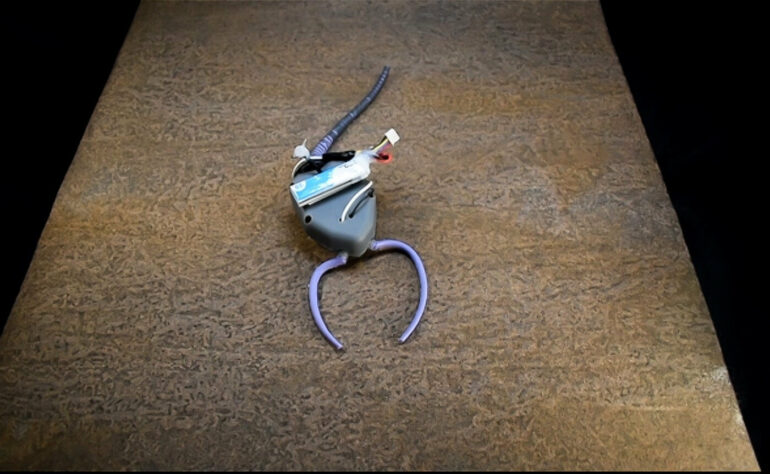Could robots, whose forms can be adapted to achieve almost any real-world task, soon be able to lend a hand in understanding the paleoecology tracing of extinct organisms?
William Ausich, a professor of Earth sciences at The Ohio State University who has studied paleontology for over five decades, believes so.
In a letter published today in the Proceedings of the National Academy of Sciences, Ausich offered commentary on a study published in the same issue on a new soft robot that may help researchers in the field test their hypotheses regarding how long-extinct creatures might have maneuvered through their environments.
“Being able to test how these organisms once operated is really important for understanding paleoecology and the history of life on Earth,” said Ausich. “Making soft robots is a very innovative new approach for us to accomplish that goal.”
Ausich discussed a study led by Richard Desatnik and Carmel Majidi at Carnegie Mellon University, and Zach J. Patterson from Carnegie Mellon University and Massachusetts Institute of Technology. The researchers developed a soft robot prototype, named “Rhombot,” which is a biomimetic—meaning it uses concepts from nature to solve complex problems.
The Rhombot was modeled after a genus of echinoderms called Pleurocystites. Echinoderms generally refer to invertebrates like starfish, sea cucumbers and sand dollars that possess distinct internal skeletons, but the Pleurocystites are extinct organisms that have a flattened body with two large feeding appendages that move along the seafloor.
Unfortunately, there are no known pleurocystitid fossils whose imprints could reveal more about the mechanics of their movement, so interpreting these animals’ life habits has been restricted to investigating their skeletal morphology, said Ausich.
Now, with the rise of paleobionics—a field that combines advances in robotics with tried-and-true paleontological principles—researchers are beginning to fill in those deep gaps within the fossil record.
According to Ausich, the creators of Rhombot began by mimicking the special connective tissue echinoderms have and setting up various theoretical and physical simulations for the Rhombot to successfully move across a contact-rich surface meant to represent an ancient, hard sea floor.
The letter then notes that the authors found that their experiments confirmed one of researchers’ previous predictions about the organisms’ motions, as the robot moved in an anterior direction with its feeding appendages first as a result of the movement of its stem, or the wide tail that extends from its back. The team also learned that Rhombot’s speed was maximized by the sweeping gait of its tail and that real-life specimens with certain body-to-tail ratios might have developed an evolutionary trend for increased speed.
These findings are particularly informative for modeling extinct organisms for which current scientists have no modern analog to compare them to, said Ausich. It’s so innovative that the letter suggests that Rhombot and other soft robotic technologies like it could also be utilized to analyze behavioral data from animals in other taxa, as well as evaluate evolutionary changes from one ancient form to the next.
Because scientists are working on a timescale of millions of years, having a clearer picture of the evolutionary puzzle could provide clues into why some species lived and others died off.
“Extinction is a big issue on Earth today, and there’s only so much biologists can do to mitigate it,” said Ausich. “But by studying what came before and after extinction and understanding the lifestyles of the organisms that worked or didn’t work back then, we can actually provide a perspective on survival that nobody else can.”
And it’s possible that these new perspectives and theories could shine a light on what kinds of species will survive the next great extinction event.
Although the robot is still a long while away from mass development, it could one day serve as an educational tool, animating long-gone prehistoric beings before researchers’ very eyes. Something like this would be especially useful for getting younger generations to fall in love with a lesser-known side of paleontology—that is, the side without dinosaurs, Ausich said.
“To be able to show a child or student how a specimen lying in rock might have actually moved—it just excites the imagination,” said Ausich.
More information:
William I. Ausich, Rhombot and the dawn of paleobionics, Proceedings of the National Academy of Sciences (2023). DOI: 10.1073/pnas.2314910120
Provided by
The Ohio State University
Citation:
Advances in soft robotics usher in a new era of scientific analysis, says researcher (2023, November 6)



